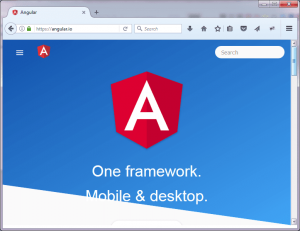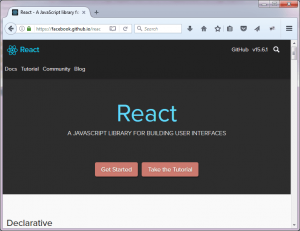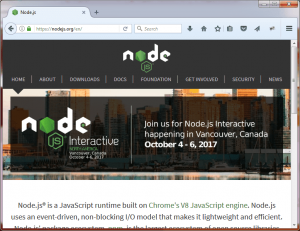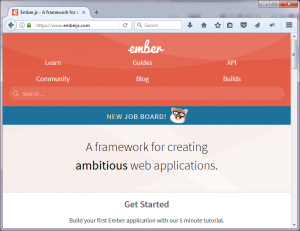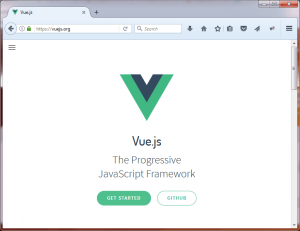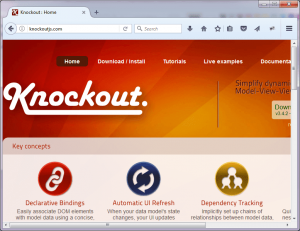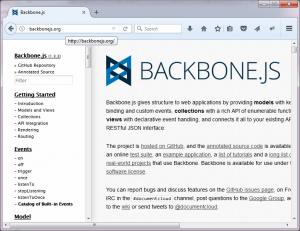Must-have JavaScript Framework/Libraries in Your Skillset
It’s not easy to stay on the top all the time. When the jQuery library was at its peak, it was time for some powerful JavaScript frameworks (Angular, Ember) and other JavaScript libraries (like React) to make front-end coding painless. These libraries and frameworks offer a different way of front-end development and provide great features to make the front-end more powerful and interactive. Now it’s time when almost every month a new JavaScript framework is being introduced and existing frameworks are being updated often. Every framework and library offers unique features, and it’s important for front-end developers to learn them. But it’s impossible to learn and remember everything! Hence, this post talks about some of the most powerful and popular JavaScript frameworks and libraries you must have in your skill set.
Angular
https://angular.io/
Angular is the most popular JavaScript framework available today for building web applications. Angular (commonly referred to as "Angular 2+" or "Angular 2") is a TypeScript-based open-source front-end web application platform led by the Angular Team at Google and by community developers. The initial version of AngularJS (commonly referred to as "Angular.js" or "AngularJS 1.X") is a JavaScript-based web application framework. AngularJS supports two-way data binding, implements MVC models, dependency injections, use of custom directives, and many more functionalities. Because of some flaws and difficulty in learning Angular 1.x, Angular 2 was created.
Angular 2 was written in TypeScript, a superset of JavaScript that implements many new ES2016+ features. Angular 2 is easier to learn compared to Angular 1.x as it simply focuses on building JavaScript classes. Views and controllers are replaced with components which are easy to read and develop. Angular 2 is modular, mobile-ready, has improved dependency injection, improved data binding, provides better performance and provides more choice for languages to write Angular 2 code.
ReactJS
https://facebook.github.io/react/
ReactJS is the fastest growing JavaScript framework. React is a declarative, efficient, and flexible JavaScript library for building user interfaces. It is an open-source JavaScript library used for building user interfaces specifically for single page applications. It’s used for handling view layer for the web and mobile apps. React also allows us to create reusable UI components.
React allows developers to create large web applications to refresh data on the view without reloading the page. The main purpose of React is to be fast, scalable, and simple. It works only on user interfaces in the applications. This corresponds to view in the MVC template. It can be used with a combination of other JavaScript libraries or frameworks, such as Angular JS in MVC.
React was first created by Jordan Walke, a software engineer working for Facebook. React first deployed on Facebook’s newsfeed in 2011 and on Instagram.com in 2012. It is maintained by Facebook, Instagram and a community of individual developers and corporations. React is currently being used by many big companies like Netflix, Buffer, Feedly, Airbnb, Walmart, and others.
TypeScript
https://www.typescriptlang.org/
TypeScript is a free and open-source programming language developed and maintained by Microsoft. TypeScript is a superset of JavaScript, which primarily provides optional static typing, classes, interfaces, and aligns with ECMAScript 6 standard proposals. It is compiled in plain JavaScript and does not require any kind of runtime library to support it. It can be used with IDEs such as Visual Studio that allow spotting compile time errors as you type the code. Static checking, symbol-based navigation, and code validations are a few reasons that make TypeScript popular among developers. Angular 2 is completely written in TypeScript. Typescript is an object-oriented way to write JavaScript and therefore it’s easier for object-oriented programmers to adopt.
NodeJS
JavaScript is primarily used for client-side scripting, whereas JavaScript is embedded in a webpage's HTML to be run client-side by a JavaScript engine in the user's web browser. Node.js enables JavaScript to be used for server-side scripting, and runs scripts server-side to produce dynamic web page content before the page is sent to the user's web browser. Node.js is a platform built on Chrome's V8 JavaScript engine for building fast and scalable network applications.
It uses an event-driven, non-blocking I/O model that makes it lightweight and efficient, perfect for data-intensive real-time applications that run across distributed devices. You can write Node.js applications in JavaScript, and can run using the Node.js runtime on OS X, Microsoft Windows, and Linux. Node.js also provides a rich library of various JavaScript modules to simplify the web application development to a great extent.
Ember.js
Ember.js is an open-source JavaScript web framework, based on the Model–view–view-model (MVVM) pattern. It allows you to create scalable single-page web applications by incorporating common idioms and best practices into the framework. It reduces the time, effort, and resources needed to build any web application. It is focused on making you, the developer, as productive as possible by doing all the common, repetitive, yet essential tasks involved in most web development projects.
Ember uses its own template engine which is a superset of the Handlerbars template engine to build semantic templates effectively with no frustration. The other great thing about ember is that it follows conventions over configuration which helps developers to focus more on their apps, and less on creating your own rules. The popularity of Ember can be measured by its user base. It is used on many popular websites: Yahoo, Netflix, Zendesk, Groupon, LinkedIn and many other major customers.
Vue.js
Vue (pronounced like view) is a progressive framework for building user interfaces. Unlike other monolithic frameworks, Vue is designed from the ground up to be incrementally adoptable. The core library is focused on the view layer only and is very easy to pick up and integrate with other libraries or existing projects. On the other hand, Vue is also perfectly capable of powering sophisticated Single-Page Applications when used in combination with modern tooling and supporting libraries.
Vue.js focuses on making ideas in web UI development (components, declarative UI, hot-reloading, time-travel debugging, etc.) more approachable. It attempts to be less opinionated and thus easier for developers to pick up.
Vue was featured as a rising star on GitHub having gained the most stars of any Open Source Project on the popular website. It recently clocked 60,606 stars which makes it among the most popular open source projects on GitHub in general.
Knockout
Knockout is a JavaScript library that helps you to create rich, responsive display and editor user interfaces with a clean underlying data model. Knockout is a standalone JavaScript implementation of the Model-View-View-Model pattern. It features:
- Declarative Binding ? HTML DOM elements can be easily associated the model data using concise and readable syntax.
- Automatic UI Refreshing ? Changes made to data model's state are reflected in the UI automatically and vice-versa.
- Dependency tracking ? automatically updates the right parts of your UI whenever your data model changes.
- Templating ? Templates are a way to build complex UI structures. Knockout.js allows you to quickly generate sophisticated, nested UIs as a function of your model data.
- Extensible - Implement custom behaviors as new declarative bindings for easy reuse in just a few lines of code.
Knockout.js is a compact and pure JavaScript library which can be added on top of your existing web application without requiring major architectural changes.
Backbone.js
http://backbonejs.org/
Backbone.js is a JavaScript framework with a RESTful JSON interface and is based on the model–view–presenter (MVP) pattern. Backbone.js gives structure to web applications by providing models with key-value binding and custom events, collections with a rich API of enumerable functions, views with declarative event handling, and connects it all to your existing API over a RESTful JSON interface. It features:
- Ease of developing frontend parts by using JavaScript functions.
- Automatic refreshing the UI when the model changes.
- Organized code.
Conclusion
This post briefly talks about the most powerful and popular JavaScript frameworks and libraries. Each of them offers a different way of designing and coding the front-end part of any application. These JavaScript frameworks implement MV* pattern to structure the code, two-way data binding, template engines, and automatic page refreshing when data changes. These frameworks and libraries also differ and have great competition! With so many options available, it becomes difficult to choose the right one. These are must-haves in your skillset as your client may have preferences and you should be ready for it. If you are comfortable with JavaScript, then these are easy to learn!
